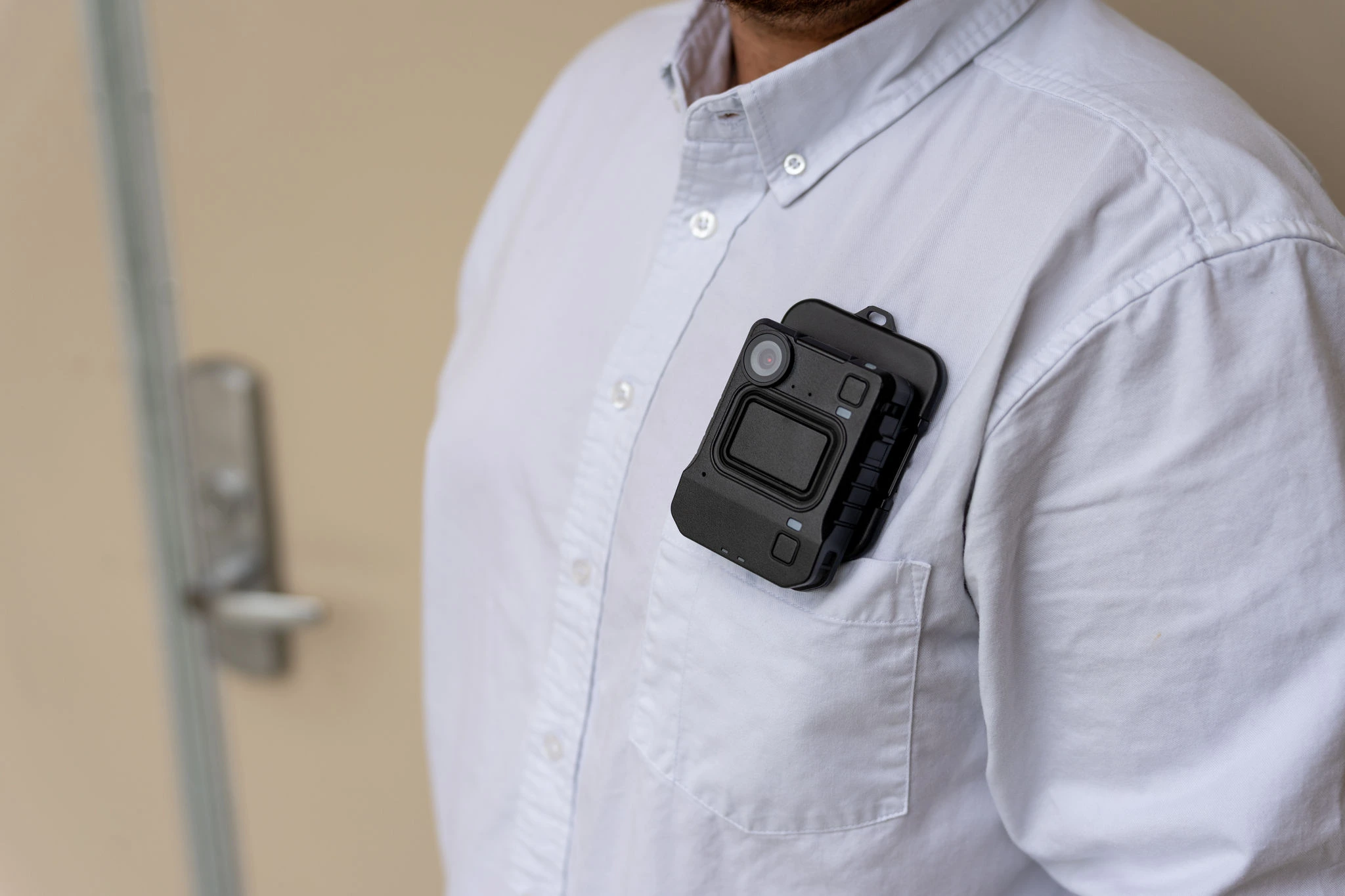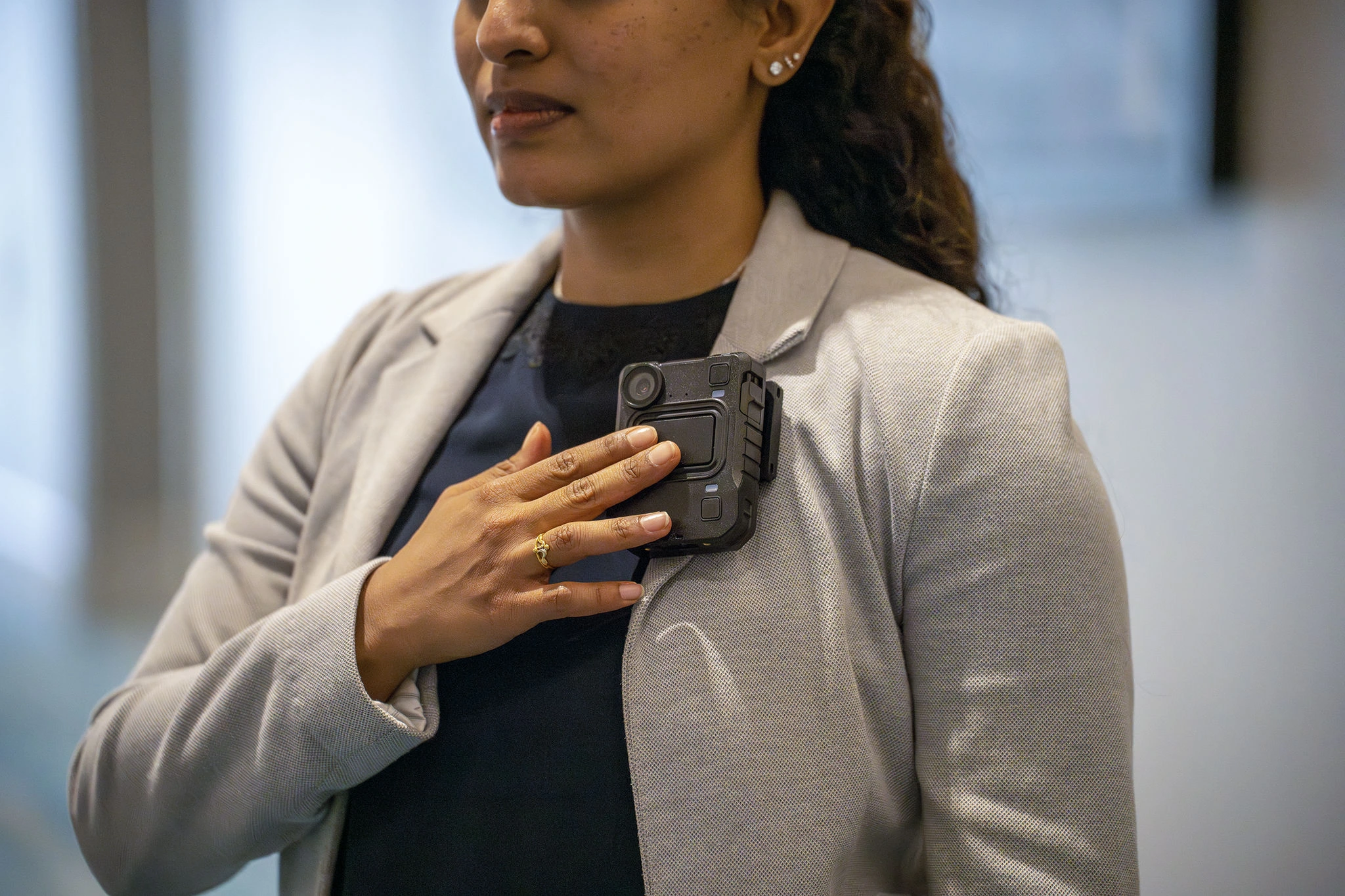Body-Worn Cameras


Critico offers a range of advanced body-worn cameras from leading manufacturers like Hytera and Motorola, designed to enhance safety, accountability, and operational efficiency.
These cameras provide high-quality video and audio recording, offering clear documentation of incidents and interactions in real-time.
Ideal for industries such as law enforcement, security, healthcare, and construction, security body cameras help deter misconduct, capture critical evidence, and improve transparency in day-to-day operations.
Our body-worn cameras seamlessly integrate with existing radio systems, ensuring that all communications and recorded data are centralized for easier management and review. This integration streamlines workflows, allowing teams to access audio and video recordings through a unified platform, enhancing coordination and accountability.
Critico’s selection of security body cameras are designed to meet the evolving demands of modern safety and surveillance needs. Equipped with long battery life, durable construction, and secure cloud storage options, these devices ensure that crucial footage is preserved and easily accessible when needed. Whether used in high-pressure law enforcement scenarios or for monitoring workplace compliance, our body-cams provide reliable performance in any environment.
In addition to their high-definition recording capabilities, our security body cameras come with advanced features such as live streaming and GPS tracking. These functionalities enable real-time monitoring and incident response, empowering organisations to enhance situational awareness and decision making. By investing in our cutting-edge body-worn video solutions, businesses and agencies can reinforce safety protocols while maintaining a clear, verifiable record of events.

Body-worn cameras

Motorola Solutions

Hytera

FAQ
What are body cameras?
What key features should I consider when choosing a body-worn camera?
When selecting a body camera it’s important to consider the following factors:
- Storage
- Battery Life
- Resolution
- Frame Rate
- IP Rating
- Low-Light/Infra-red Capabilities
- Encryption
- Screen
- Mounting options
- Included Software
What resolution is ideal for a body camera?
A common mistake when choosing security body cameras is focusing too much on resolution and video quality.
With body cameras, there’s a balance between resolution, storage, frame rate and battery life. Even if a camera can record in 1296p, it’s often impractical to use this setting due to its impact on battery life and storage. It’s more important to consider battery usage and storage capacity.
How much storage do I need in a body camera?
The storage you need depends on how frequently you record during a shift. Some brands, like Hytera, offer models with varying storage capacities, ranging from 16GB to 128GB. Generally, 32GB is enough unless you expect to record multiple incidents for extended periods during a shift.
Is encryption necessary for body cameras?
Yes, encryption is crucial, especially under GDPR regulations, which require stringent measures to protect video recordings and ensure data security. The primary concern is the possibility of a camera being stolen and its footage being accessed, which would be a GDPR violation.
What is lens angle, and how does it impact recording?
Lens angle, or field of view, is crucial when choosing a body camera. The lens angle determines how much area the camera captures on either side of the lens. A wider lens angle means more of the surroundings are captured in the footage, which is particularly important if the camera is mounted on one side of the body.
What are streaming cameras, and do I need one?
Streaming cameras are security body cameras that upload footage in real-time, usually via a SIM card connection. These are more commonly used by police and government agencies. In most cases, you won’t need a streaming camera unless your job requires real-time video transmission.
Should I get a docking station for my body camera?
Most body cameras come with individual docks for charging and data transfer. A multi-dock station allows you to charge and download footage from multiple cameras simultaneously. If you only have one or two cameras, a multi-dock station may not be necessary. However, if you are managing several cameras, a multi-dock station will be required.
What are my options for mounting a body camera?
Body cameras usually come with some form of mounting system, such as clips, studs, or harnesses. One of the most common mounting system is KlickFast, which securely locks equipment to your uniform or harness and allows for quick deployment. It’s important to ensure that your camera is compatible with KlickFast, as not all models come with the necessary stud.
What should I consider when wearing a body camera?
Placement is key when wearing a body camera. Mounting the BWC in the center of the chest can restrict arm movement, while shoulder mounts can limit visibility on the opposite side. If you’re left-handed, be aware that most shoulder harnesses are designed for the left shoulder, which could affect your comfort during manual tasks.
What are IP ratings, and why do they matter?
IP ratings, or Ingress Protection ratings, indicate how well a device is protected against dust and moisture. For security officers, it’s important to choose a body camera with a high IP rating, such as IP65 to ensure durability in tough conditions. Higher-end cameras come with IP67 ratings, providing greater protection against the elements.


Get in Touch
For more information on how Critico solutions can benefit your organisation, contact us today to learn more about how we can tailor a system to meet your specific needs.
